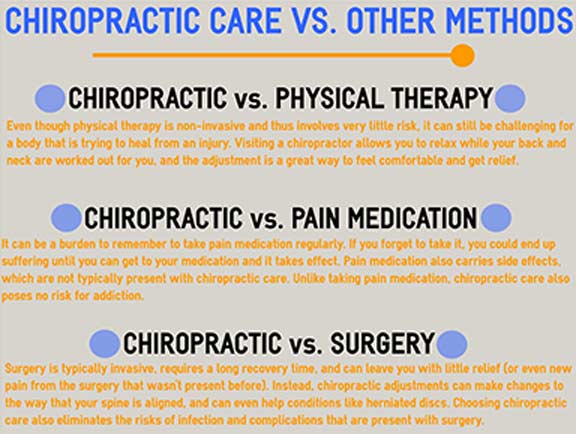The Link Between Posture And Back Pain: Ways To Guarantee Proper Placement All Day
The Link Between Posture And Back Pain: Ways To Guarantee Proper Placement All Day
Blog Article
Staff Writer-Ibrahim Fraser
Keeping appropriate pose isn't just about staying up right; it has to do with straightening your body in such a way that sustains your back and minimizes the danger of pain in the back. The way you sit, stand, and relocate throughout the day can significantly impact your spine health and wellness. But exactly how precisely can you ensure good alignment continually, also during hectic days filled with various tasks? Let's delve deeper right into the subtle yet impactful adjustments you can make to your daily routine to keep your back happy and healthy and balanced.
Importance of Correct Stance
Appropriate posture is vital in preserving a healthy and balanced back and preventing discomfort. When you sit or stand with great position, your back is in placement, decreasing pressure on your muscle mass, ligaments, and joints. This positioning enables the body to distribute weight equally, preventing too much stress on particular locations that can lead to pain and pain. By maintaining your spine correctly lined up, you can also enhance your breathing and food digestion, as slouching can compress body organs and restrict their performance.
In addition, preserving excellent posture can boost your total look and positive self-image. When you stand tall with your shoulders back and head held high, you exhibit self-confidence and appear even more approachable. Excellent position can likewise make you feel a lot more energized and sharp, as it advertises proper blood circulation and permits your muscular tissues to work effectively.
Integrating correct stance right into your daily regimen, whether sitting at a workdesk, strolling, or working out, is vital for protecting against pain in the back and promoting total health. Keep in mind, a little modification in how you hold on your own can make a significant difference in just how you feel and operate throughout the day.
Common Postural Mistakes
When it concerns preserving great position, several individuals unconsciously make usual mistakes that can add to neck and back pain and discomfort. Among the most widespread errors is slumping over or hunching over while sitting or standing. This position places extreme stress on the back and can lead to muscle imbalances and discomfort in the long run.
Another common mistake is overarching the reduced back, which can squash the natural contour of the spine and cause discomfort. Furthermore, crossing legs while sitting may really feel comfortable, however it can produce a discrepancy in the hips and pelvis, causing postural issues.
Utilizing a pillow that's also soft or also solid while resting can additionally influence your alignment and add to pain in the back. Finally, constantly craning your neck to take a look at screens or adjusting your placement regularly can stress the neck and shoulders. Being mindful of these common postural errors can assist you preserve far better alignment and reduce the risk of back pain.
Tips for Correcting Alignment
To enhance your alignment and lower neck and back pain, it's vital to concentrate on making small adjustments throughout your daily routine. Begin by bearing in mind your pose. When sitting, guarantee your feet are level on the flooring, your back is straight, and your shoulders are relaxed. Prevent slouching or leaning to one side. Use ergonomic chairs or cushions to sustain your reduced back.
When standing, disperse your weight equally on both feet, maintain your knees a little curved, and tuck in your hips. Involve your core muscles to sustain your spinal column. Take breaks to stretch and walk if you have a sedentary task. Include workouts that reinforce your core and back muscle mass, such as slabs or bridges.
While sleeping, use a pillow that supports the natural contour of your neck to keep proper back positioning. Avoid sleeping on your stomach, as it can strain your neck and back. By bearing in mind these pointers and making small changes, you can progressively fix your placement and minimize pain in the back.
you can check here in mind, keeping good posture is essential to preventing pain in the back and promoting back health. By bearing in mind your positioning, distributing weight uniformly, and involving your core muscular tissues, you can reduce stress on your back and decrease the risk of discomfort and injury. Incorporate ergonomic support, take normal breaks to stretch, and enhance your core and back muscular tissues to keep proper positioning throughout the day. check out here will certainly thank you for it!
